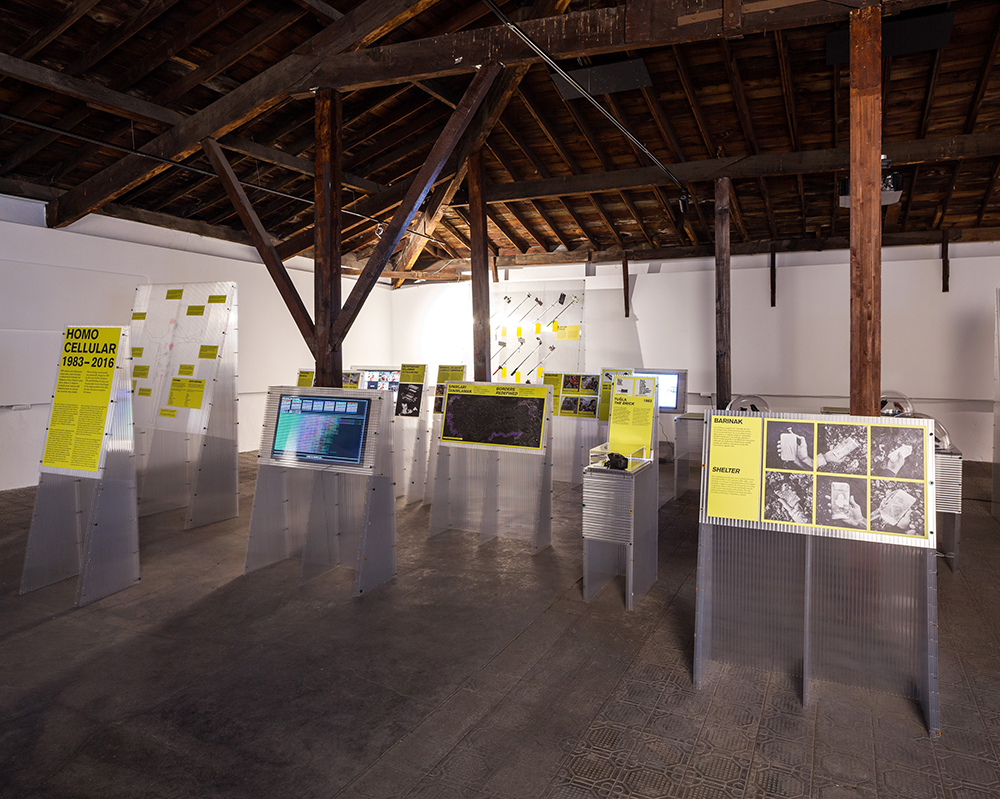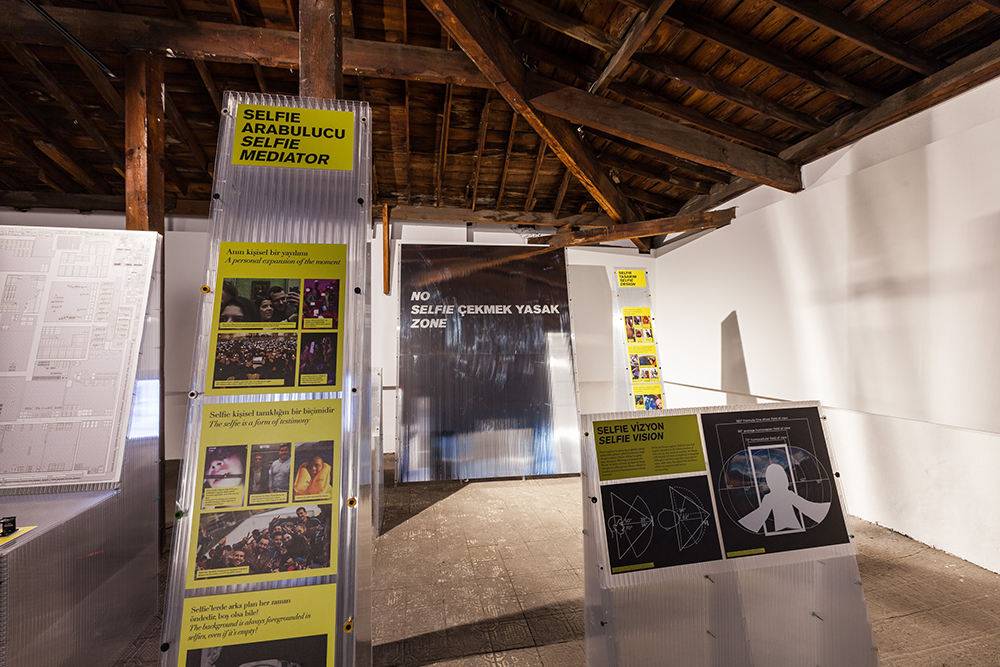Homo Cellular
Galata Greek Primary School
Ivan-Nicholas Cisneros, Jesse L. McCormick, Iara Pimenta, Gizem Sivri. Display: Andres Jaque and the Office for Political Innovation

“Human biology and mentality started to radically change in 1983 with the arrival of the cell phone. The blinking, buzzing and beeping object has become an integral part of body and brain. There are now more active cell phones on the planet than people. Perception, social interaction, memory, and even thought itself have become increasingly cellular. The cell phone… has taken over much of what used to be defined as the responsibility of shelter in terms of sense of security, space, orientation and representation. The cell phone is not simply carried, looked at, or touched or by a person since the person is unthinkable without the device. Most people feel extreme anxiety when they misplace their phone, lose reception, or the battery simply runs out. The cell phone has become an integral part of the sense of self.” –B+M

Homo Cellular presents a multi-dimensional analysis of the dramatic transformation of the human by the cell-phone. This expanded exhibit brings together statistics, data visualizations, film excerpts, animations and a collection of some of the most popular cell phone models of the past three decades – starting with the first commercially available cell phone, the Motorola DynaTAC 8000X in 1983. It explores the new forms of human interaction, ways of occupying space, gestures, selfies, dronies, massive communication infrastructure, surveillance, and personal expression. The installation shows how the cell phone has become an integral part of the biology and mentality of the human and has taken over many of the responsibilities of architecture, becoming a vital form of shelter. Homo cellular is one of the six curatorial interventions developed by the Curatorial Team of the 3rd Istanbul Design Biennial with a joint team of students from Columbia and Princeton Universities during the summer of 2016.
